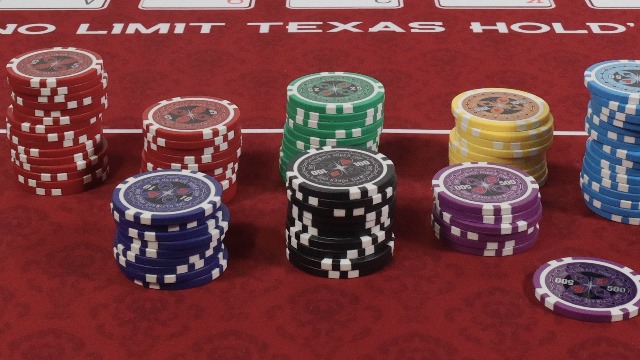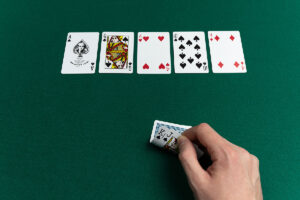When it comes to poker, understanding the right number of chips to use can make or break your game. Whether you’re hosting a friendly home game or organizing a more formal tournament, getting the chip count just right ensures smooth gameplay and keeps everyone engaged. It’s not just about having enough chips—it’s about creating the perfect balance for the stakes and structure.
Understanding Poker Chips
Poker chips are more than just objects for wagers; they define game structure and pacing. Each chip holds value, simplifying transactions during gameplay.
The Importance Of Poker Chips In The Game
Poker chips standardize betting and enhance the flow of the game. Using chips avoids confusion that currency might cause, keeping focus on strategy. Proper distribution of chips ensures fairness and manages progression, preventing games from ending too soon or dragging on unnecessarily.
Chips also contribute to the player’s experience by visually distinguishing stacks and providing a tactile element that fosters engagement. Their role extends beyond functionality, directly influencing the dynamics of gameplay.

Common Poker Chip Values And Colors
Standard poker chip sets often follow a color scheme for specific denominations. Examples include:
- White: $1
- Red: $5
- Green: $25
- Black: $100
- Purple: $500
- Orange: $1,000
For casual games, adjusting these values based on the stakes is common. Many sets exclude higher denominations like $500 or $1,000, depending on the game’s scale. Following these conventions helps players quickly recognize values and avoid confusion during bets.
Determining How Many Poker Chips You Need
Deciding the number of poker chips required depends on the game format, number of players, and betting structure. Ensuring each player has a sufficient and balanced stack enhances gameplay.
Factors To Consider
- Number of Players
More players demand larger chip quantities. For example, a casual game of 6-8 players typically requires 300-400 total chips, while tournaments with 10 or more players may need 500-1000 chips.
- Buy-in and Stakes
Higher buy-ins and stakes call for a wider range of chip denominations. A $100 buy-in night might require denominations ranging from $1 to $25, while higher-stake games may introduce $100 or $500 chips.
- Game Duration
For long-duration games, adequate chips prevent premature shortages, ensuring consistent gameplay without interruptions.
- Game Type
Different poker variations like Texas Hold’em or Omaha influence chip needs due to varying betting patterns and player actions.
Standard Chip Distribution For Different Poker Games
- Casual Home Games
A typical allocation for a 300-chip set includes:
| Denomination | Quantity | Percentage |
|---|---|---|
| $1 | 100 | 33% |
| $5 | 150 | 50% |
| $25 | 50 | 17% |
This setup suits 6-8 players, offering balanced stakes with limited denominations.
- Tournament Games
Larger tournaments benefit from broader distributions, such as a 500-chip set:
| Denomination | Quantity | Percentage |
|---|---|---|
| $25 | 150 | 30% |
| $100 | 200 | 40% |
| $500 | 100 | 20% |
| $1,000 | 50 | 10% |
Tournament chips downplay lower-value denominations as blinds increase progressively, keeping the game fluid.
- High-Stakes Games
High-stakes games may introduce denominations above $1,000. For example, a set could include:
| Denomination | Quantity | Percentage |
|---|---|---|
| $100 | 100 | 20% |
| $500 | 200 | 40% |
| $1,000 | 200 | 40% |
Precision in chip distribution accommodates higher buy-ins without bloated stacks.
Popular Poker Game Chip Setups
Different poker variants and formats require specific chip setups to facilitate smooth gameplay. Below, I breakdown optimal chip distributions for popular games and formats.
Texas Hold’em
Texas Hold’em, the most common poker variant, typically requires a balanced chip structure to match the blinds and betting rounds. For a casual home game with 6-8 players, I recommend preparing 300-500 chips. Use denominations such as:
- White: $1
- Red: $5
- Green: $25
- Black: $100
For tournaments, I allocate higher quantities of low-value chips to accommodate frequent small bets during early rounds. Standard starting stacks often include 10-20 chips per denomination to maintain equal distribution.
Omaha
Omaha games, including Pot-Limit Omaha, follow similar principles to Texas Hold’em but need a larger stack due to higher pot sizes. A 6-player game typically uses 400-500 chips. Chip ranges for Omaha often mirror Hold’em but may shift toward mid-value chips. For example:
- White: $1
- Red: $5
- Blue: $10
- Green: $25
To avoid running out mid-game, I adjust chip totals upward for each player, especially in longer-duration matches.
Tournament vs. Cash Games
Chip needs differ between tournaments and cash games. Tournaments require structured blinds and increasing chip values to ensure progression. For a 10-player tournament, I set the total chip count at 1,000+ and use ratios favoring $1, $5, and $25 chips. Starting stacks usually consist of 50-100 chips per player in declining denominations.
In cash games, chips directly represent money, so fewer denominations suffice. For a $1/$2 no-limit game, I typically use 100 $1 chips, 200 $5 chips, and 50 $25 chips. Players can buy more chips if needed, making large initial stockpiles unnecessary. Proper preparation ensures seamless transitions between rounds and stake levels.
Tips For Managing Poker Chips
Effective poker chip management enhances gameplay by maintaining clarity and fairness. Organizing and distributing chips properly minimizes confusion and keeps games running smoothly.
Ensuring Fairness And Clear Rules
I prioritize fairness by establishing clear rules for chip distribution and betting. Standardizing starting stacks ensures each player begins on equal footing. For example, in a home game with 8 players and 500 chip stacks, I divide the chips into even amounts across denominations, like 10 white ($1), 10 red ($5), 7 green ($25), and 4 black ($100) chips.
I communicate buy-in values, re-buy conditions, and blind structures before starting, ensuring everyone understands the stakes. Ignoring these steps risks disputes during play. I also prevent hoarding by redistributing chips evenly after finishing games or in multi-round formats.
Storing And Organizing Your Chips
I avert disorganization by storing chips in designated containers or trays. Chip cases with slots ensure separate storage for each denomination, making setup faster. Using color-coded trays matches common poker chip values, like white for $1 or blue for $10, simplifying organization.
I count and sort chips after every session, avoiding shortages or misplacements. If storing larger collections, I use lockable cases to protect chips and ensure consistent availability for future games. This method keeps chips in excellent condition and ready for immediate use.
Conclusion
Understanding how to manage poker chips effectively can make or break the flow of any game, whether you’re hosting a casual night or organizing a tournament. By tailoring chip quantities and denominations to suit your game format, player count, and stakes, you create a more engaging and seamless experience for everyone involved.
Taking the time to plan chip distributions, establish clear rules, and maintain proper organization ensures fairness and prevents unnecessary interruptions. With the right setup, you’ll not only enhance gameplay but also keep players focused on strategy and enjoyment, which is what poker is all about.



